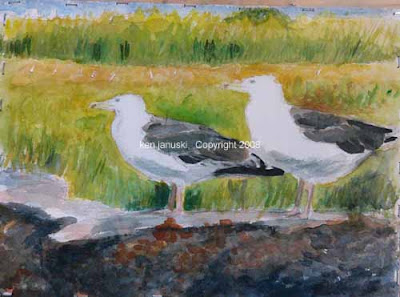
It's always about Thanksgiving that we see our first hawk kill in our backyard. Usually it's an immature Sharpshinned Hawk but occasionally it is a Cooper's Hawk and I'm pretty sure that's what this is, this time a mature one. It's been cold and rainy this weekend so we've had more bird visitors than usual, a very quick visit by eight Common Grackles, two Carolina Wrens - one more than our previous high count, and our first Northern Mockingbird in awhile. Unfortunately for the other feeder birds I guess the hawk was just as hungry as they were. I believe that is the remains of a pigeon beneath his feet. He eventually flew off with it so there's not much left to help identify his victim.

Most of the color is also gone from the garden by this time of year. But the Zinnias seem to keep just the faintest sense of their original color. Here their fascinating shapes are a good counterpoint to the largely barren seedheads of Fennel. It's hard to see these spent Zinnias each fall and not think of Piet Mondrian's wonderful Chrysanthemum drawings. Their structure cries out to be put down on paper. I've always wondered if the Mondrian drawings don't hold some clue as to his real visual intent in his later abstract paintings. Artists' motivations are many but I can't help but think that one of them is to put down on paper, to concretize if there is such a word, the fascinating structure of nature. In an earlier post I mentioned 'carving three dimensional objects out of the two dimensional space of paper' or something very similar. These Zinnias just seem to say: "You have to draw us! Please concretize us!" But so does that hawk. In fact all of nature puts its structure on display over the next few months, all of it crying out to be drawn. Well we shall see.
I did spend about two hours today drawing Mourning Doves, House Finches and Juncos at or around our feeders, this time with pencil and waterbrush and watercolor. They're an improvement over the first felt-tip pen attempts of a few weeks ago. But I've put up too much questionable art recently. So I'll wait for something more successful before posting it. I think I've now made a convincing case for the fact that I can do so-so art from life. It's probably best to wait and show some sign of improvement! I do remain confident that they will get better.







